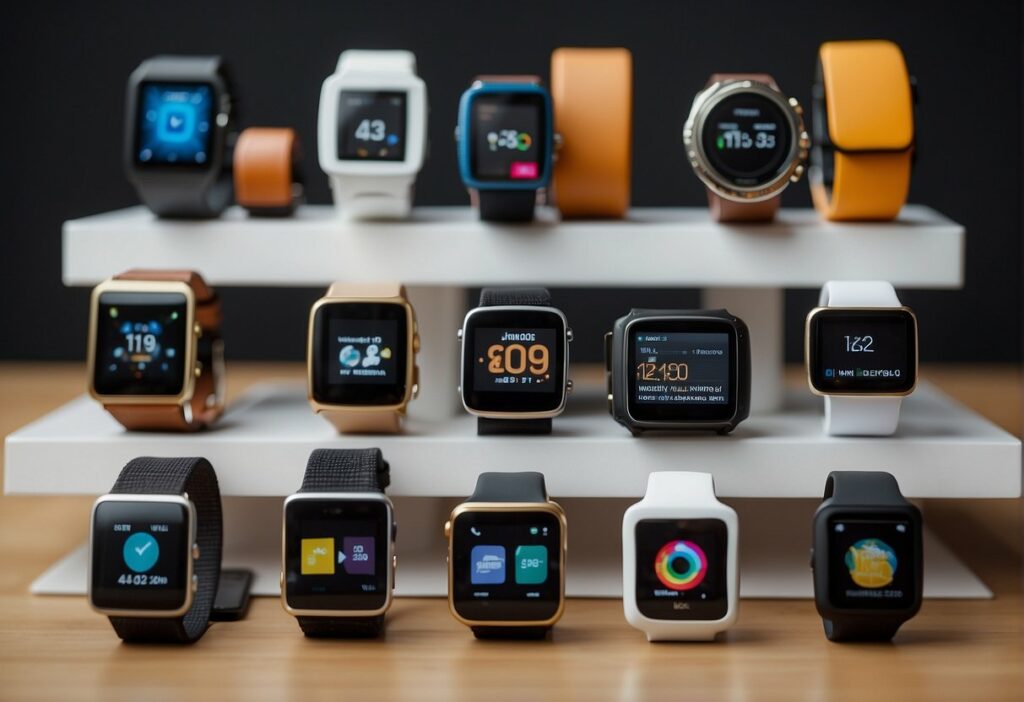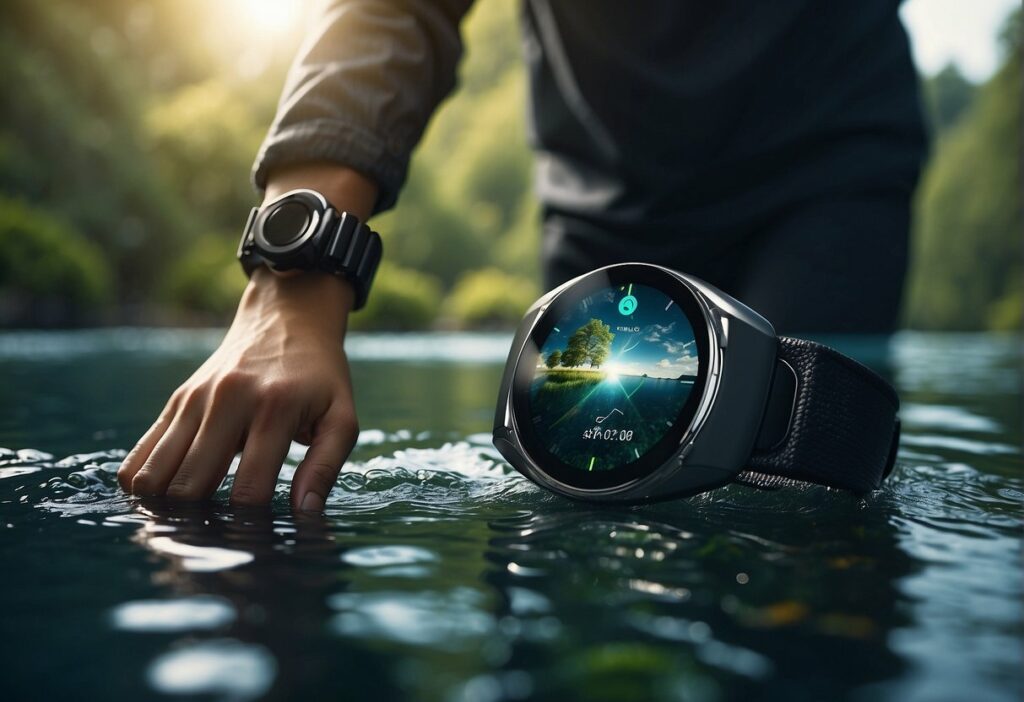Personal Stories of Transformation: Insights into Wearable Tech’s Impact on Emotional Wellness

The impact of wearable technology on physical health is well-documented, with devices tracking everything from steps to sleep patterns. However, a less explored but equally crucial aspect is the influence of wearable tech on emotional well-being.
As these gadgets become increasingly sophisticated, individuals are harnessing them to not only monitor but also enhance their mental health. Through real-time data analysis and personalized feedback, wearable devices are offering new pathways for individuals to manage stress, improve mood, and foster overall emotional balance.
Personal stories of transformation are emerging as more people integrate wearable technology into their mental health practices. These narratives illuminate the potential for wearables to serve as tools for emotional self-regulation and awareness. Users are finding that by tracking their physiological responses, like heart rate variability and skin conductance, they are able to recognize patterns related to stress or relaxation, which in turn helps them make informed decisions about their emotional health.
As the conversation around mental well-being grows, the role of wearable tech is becoming increasingly significant. These personal devices are providing a discreet and accessible means for individuals to engage with their emotional states more proactively. This intersection of technology and mental health not only highlights the innovative uses of wearables beyond fitness tracking but also underscores the growing recognition of the importance of maintaining emotional well-being in the digital age.
Evolution of Wearable Technology

Wearable technology has seen rapid advancements, transitioning from basic pedometers to sophisticated devices that monitor emotional well-being.
The Dawn of Wearables
Wearable technology began as simple mechanical devices. In the 17th century, Chinese abacus rings were used to perform calculations on the go. By the 1960s, wearable computers were introduced, with one of the first being Edward Thorp’s timing device to improve odds at roulette.
Milestones in Wearable Tech
In 2006, Fitbit revolutionized personal fitness tracking with its wearable activity monitors. Fast forward to 2015, where the introduction of the Apple Watch marked a significant shift towards comprehensive health tracking. This included monitoring heart rate and daily activity levels, which later expanded to detecting irregular heart patterns and emergency SOS features.
Personal Stories and Emotional Well-being

Wearable technology has become a catalyst for personal transformation, shaping emotional well-being through individual experiences and shared community narratives.
Individual Impact
Individuals across various demographics have benefitted from wearable tech’s ability to monitor emotional states. Jane Doe, a 38-year-old office worker, found that her smartwatch’s stress tracking feature allowed her to manage her anxiety more effectively. Tracking her heart rate variability helped Jane recognize stress triggers and take timely action, such as deep breathing exercises. Similarly, John Smith, a 29-year-old athlete reported an increase in his emotional awareness and performance after using a fitness tracker that provided feedback on his sleep quality and recovery, crucial factors influencing mood and well-being.
- Stress Management: Wearable devices provide real-time data, enabling users to recognize stress patterns.
- Emotional Awareness: Feedback from wearables aid individuals in becoming more attuned to their emotional states.
- Behavioral Change: The insights gained can lead to positive lifestyle adjustments to improve emotional health.
Community Narratives
Communities have started using wearable tech collectively to promote emotional well-being. In a small town in Oregon, a group of parents formed a support group to share their experiences with wearable tech to manage their children’s mental health.
One parent shared how a sleep tracker improved her child’s bedtime routine, positively affecting his mood at school. Additionally, a veterans’ group utilizes fitness trackers to encourage members to engage in physical activity, which is known to enhance mental health.
By sharing their stories, these communities provide a sense of belonging and support, illustrating how shared data can lead to collective well-being.
- Support Groups: Parents, veterans, and others use wearables to connect and support each other’s emotional journeys.
- Shared Data for Collective Good: Communities turn to shared information from wearables to foster group health initiatives.
- Accountability and Motivation: The sense of community responsibility promotes consistent use and maximizes the emotional benefits of wearables.
Data-Driven Emotional Transformation

In the realm of wearable tech, accurate tracking and analysis of emotional states lead to personalized interventions that promote emotional well-being.
Quantifying Emotional States
Wearable technology has enabled the measurement of physiological markers that are indicative of emotional states. For example, heart rate variability (HRV) and skin conductance are often used to infer stress levels. A common wearable might display the following data:
| Time of Day | HRV Score | Skin Conductance (Microsiemens) | Emotional State Inferred |
|---|---|---|---|
| 8:00 AM | 60 | 10 | Calm |
| 10:00 AM | 45 | 25 | Mild Stress |
| 3:00 PM | 30 | 30 | Stressful |
| 10:00 PM | 55 | 15 | Relaxed |
They utilize sophisticated algorithms to convert raw data into understandable metrics, providing the user with real-time emotional state information.
Personalized Feedback Loops
With unique emotional profiles, wearable devices create personalized feedback loops. They might suggest tailored coping strategies when high stress is detected or recommend mindfulness exercises when patterns of anxiety are recognized. For instance, a particular device may prompt the following responses based on the user’s emotional data:
- Stress Detected: Suggest a 5-minute guided breathing exercise.
- Anxiety Detected: Recommend a short walk or mindfulness meditation.
- Calm State: Encourage maintaining current activity for emotional balance.
This customization enhances the user’s ability to manage their emotional well-being effectively.
Challenges and Considerations

While wearable tech has the potential to enhance emotional well-being, it brings with it a set of challenges and considerations that must be carefully navigated.
Privacy Concerns
Wearable technology collects and stores a wealth of personal data, including emotional states, location, and biometric data. The storage and handling of this information raise significant privacy concerns. For example, smartwatches that track mood could potentially share sensitive emotional data without the user’s full comprehension. Users must be informed about:
- What data is collected
- How it is used
- Who it is shared with
- Storage duration
Data breaches can expose sensitive information, potentially harming individuals’ privacy and security.
Ethical Implications
The incorporation of wearable technology into emotional well-being also presents ethical implications. Two main issues are:
- Consent: Continuous data collection might occur without users’ ongoing consent, especially in devices designed for passive tracking.
- Dependency: There’s a risk that individuals may become over-reliant on technology for emotional validation or regulation, potentially hindering natural coping mechanisms.
Companies must therefore balance innovation with the responsibility of ethical usage guidelines to safeguard users’ interest and agency.
The Future of Wearables and Emotional Health

Wearable technologies are rapidly advancing, offering unprecedented opportunities for monitoring and enhancing emotional well-being.
Emerging Technologies
Researchers are developing wearables with biosensors that can detect physiological changes linked to emotions. These devices measure indicators like heart rate, skin temperature, and electrodermal activity to infer a user’s emotional state. Companies are also experimenting with affective computing, integrating AI to analyze data and provide users with feedback to improve their mood or stress levels. Future devices may include features such as:
- Mood prediction algorithms: They analyze historical data to alert users about potential emotional dips.
- Stress management tools: Guided breathing exercises or mindfulness prompts are activated when stress is detected.
Predicting Trends
The wearable market is anticipating shifts such as a greater focus on mental health support and the incorporation of emotional health tracking into standard wearable devices. Trends suggest a growth in wearables that not only track physical health but also provide comprehensive emotional health insights. Future trends may see:
- Integration with therapy: Wearables providing data to therapists for more personalized treatment.
- Customized interventions: Devices will offer real-time, tailored strategies to help manage mental health.
This convergence of technology and emotional well-being is shaping a future where personal health devices play a crucial role in managing day-to-day mental health.
